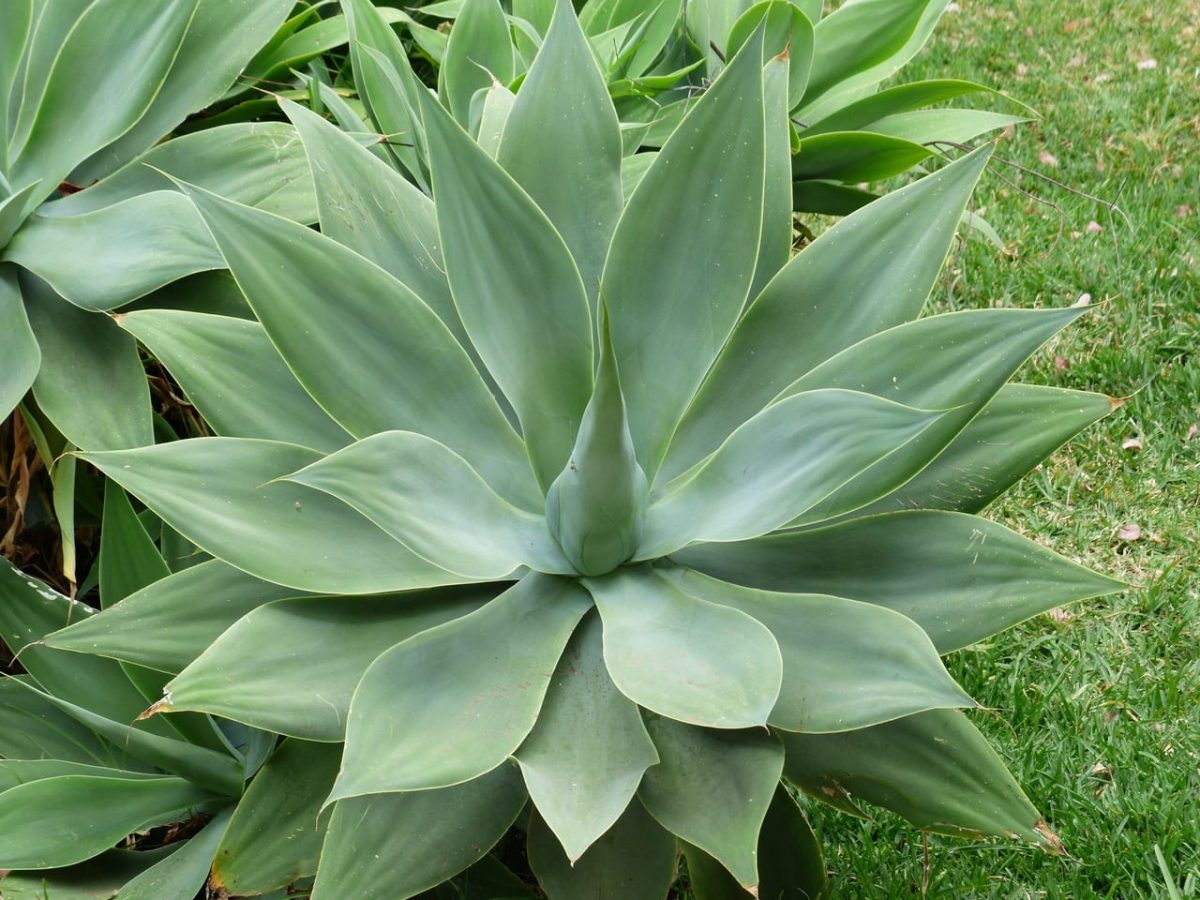
Agave attenuata
All the succulents or non-cacti succulents They are a type of vegetable that is grown in the temperate and warm regions of the world, and even in the cold ones inside greenhouses. Their maintenance is very low, and as they take very different forms, being also very decorative they are often kept in pots to decorate the home, or outside occupying the space of one or more tables.
There are many species, and all of them are beautiful, no, the following. So if you want to enter this fascinating world, in Jardinería On We are going to show you some of the most curious succulents. And if you still want to know more, after reading you will know what care do they require to look and be beautiful all year.
What are succulent plants?

Lithops
Our protagonists, known as succulents or succulents not cacti, are those that have some part that has become a water store. Usually it is the leaves, but it can be the stems and sometimes both. Thanks to this adaptation, they can survive in arid and dry environments, where other plants cannot.
One of the ways that they have developed to absorb the water coming from the dew has been the production of some hairs found on the leaves that retain it, which is why some have a soft touch, like the Echeveria silky for example.
However, there are others who have chosen do not grow too much. When a body is small, it needs less water than when it is large, so there are species that are so small, such as Lithops, which survive drought for days and weeks.
Which are?
Plants considered succulent are those that belong to these families:
- agavaceae: it is composed of about 300 species of succulent whose succulent organ are the leaves.
- Aizoaceae: it is composed of about 2000 species of succulent whose succulent organ are the leaves.
- apocynaceae: it is composed of about 500 species of succulent, whose succulent organ is the stem.
- Asphodelaceae: it is composed of about 500 species of succulent whose succulent organ are the leaves.
- Crassulaceae: it is composed of about 1300 species of succulent whose succulent organ are the leaves.
- didieraceae: It is composed of about 11 species of succulent whose succulent organ is the stem.
- Euphorbiaceae: it is composed of more than 1000 species of succulent whose succulent organ is the stem.
- Portulacaceae: it is composed of 26 botanical genera to which species belong whose succulent organ are the stem and leaves.
How do they multiply?
Here is a video in which we explain it:
Types of succulents
As you can see, there is a great variety of succulent plants. Here we talk about a few genres:
Aeonium
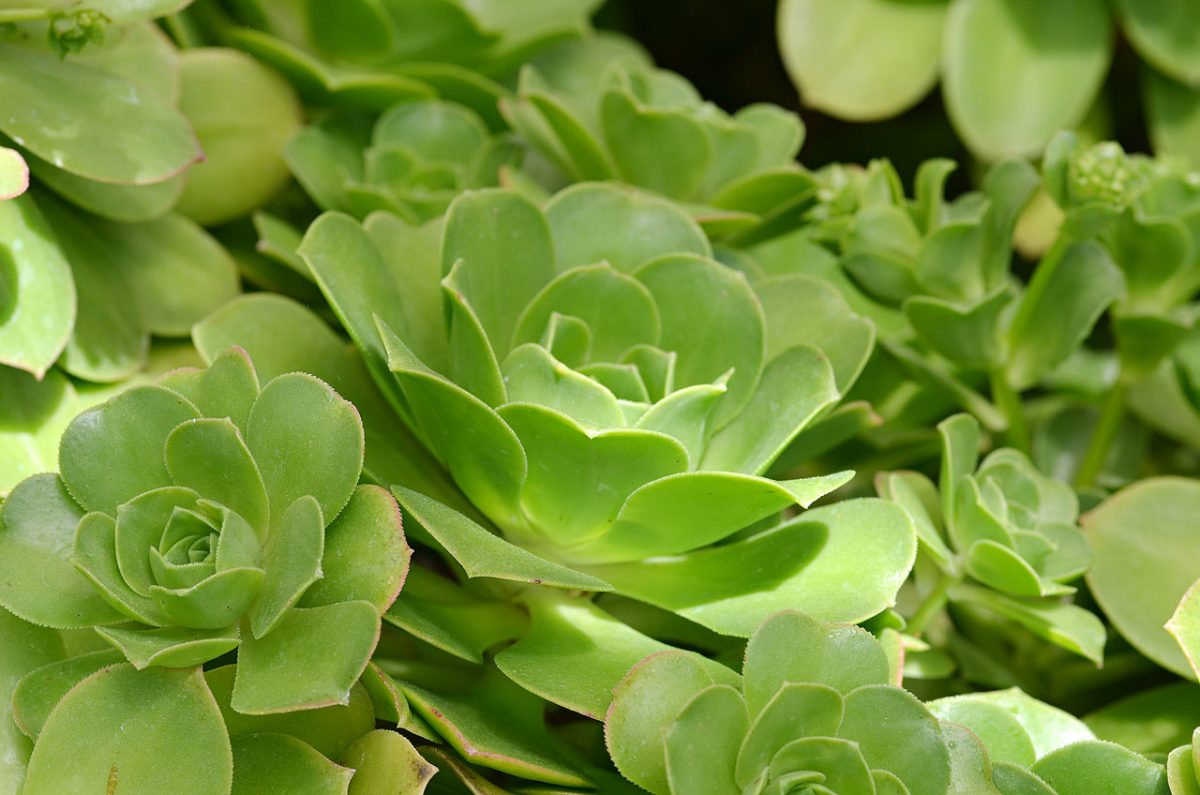
Image - Wikimedia / H. Zell // Aeonium canriense
The Aeonium they are one of the most cultivated succulents. The genus comprises about 70 species, the majority being indigenous to the Canary Islands and Madeira. They grow forming a rosette of more or less fleshy green or brownish leaves depending on the variety. They usually develop a stem of about 30 centimeters, although there are some that can exceed that height, such as the Aeonium arboreum.
Aloe
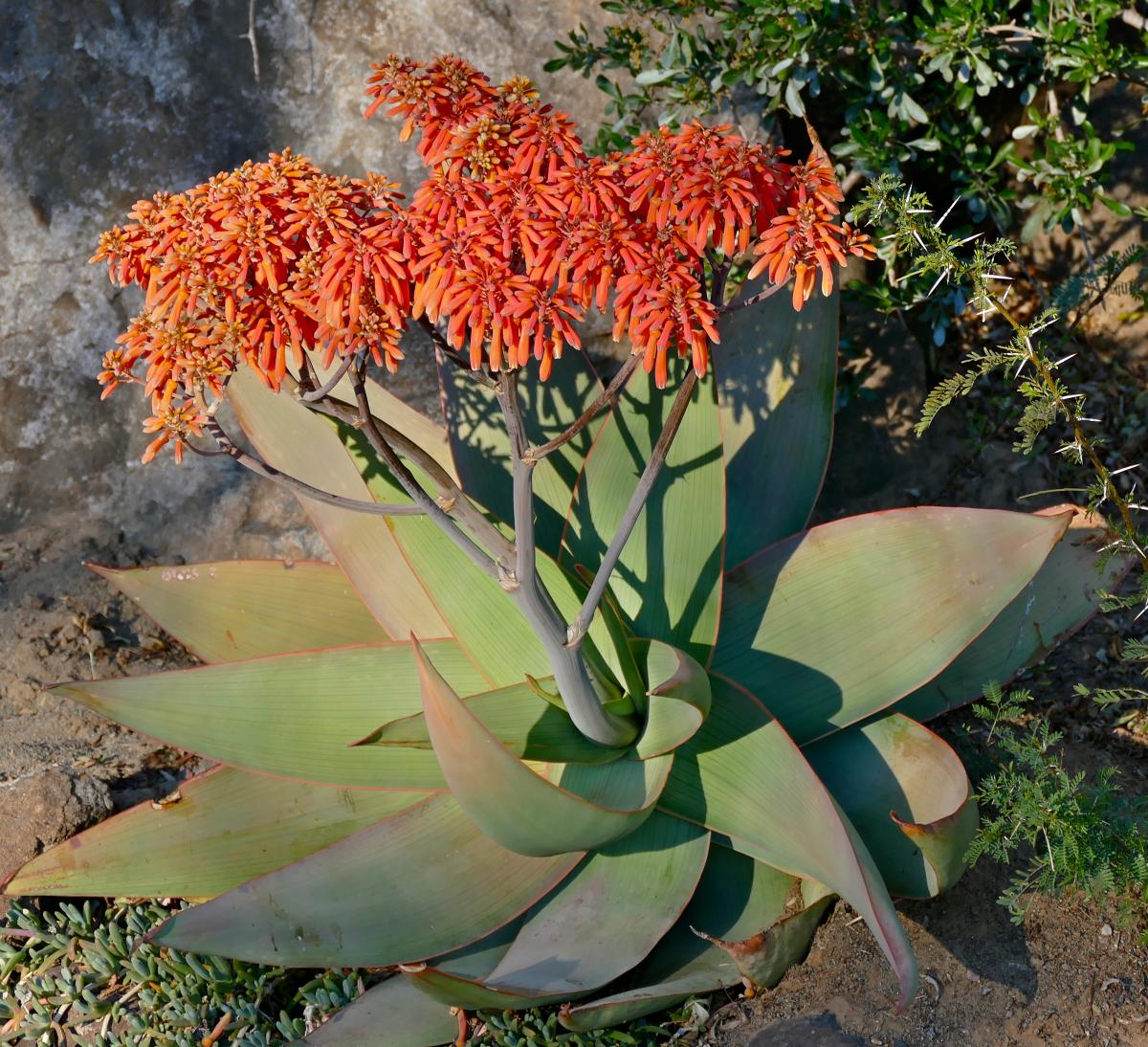
Image - Wikimedia / Bernard DUPONT // aloe striata
Aloe or aloe are plants that belong to a genus, Aloe, composed of about 525 species, such as the Aloe vera. Most are native to Africa, although there are some from Madagascar and the Middle East. They reach a height of between 30 and 50 centimeters. Its leaves are almost triangular and thick, and grow to form a rosette which sprouts, almost always from a more or less short stem. Its flowers are tubular and form inflorescences in red or yellow spikes.
argyroderma
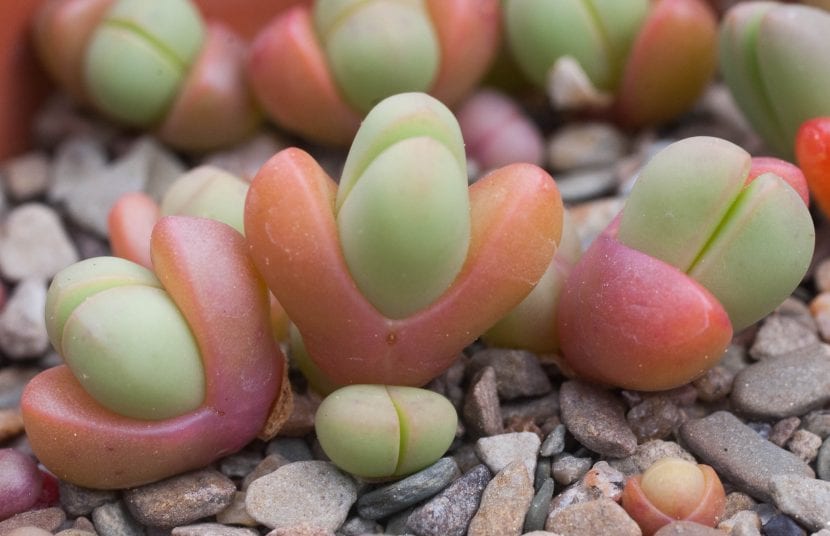
Image - Lithops Rescue // Argyroderma fissum
The Argyroderma are a genus of 12 species endemic to South Africa that reach a height of 2-3 centimeters. They present four very fleshy green leaves: the two old ones and the other two that sprout from the center. Its flowers are normally pink.
conophytum
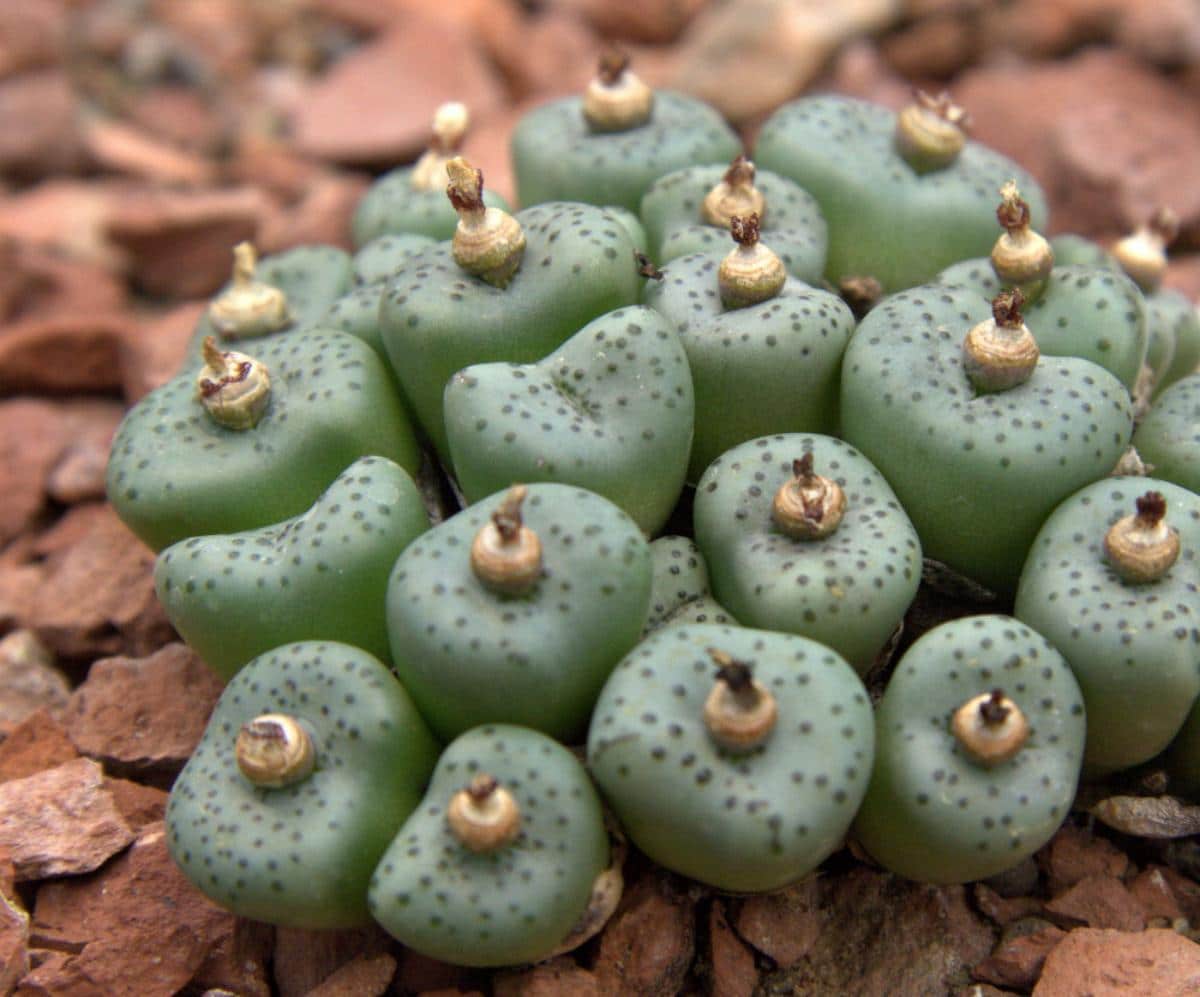
Image - Wikimedia / CT Johansson // Conophytum obcordellum
The more than 400 species of conophytum that exist, they are very small plants, originating in South Africa that they reach a height of 2-3 centimeters. They have two almost spherical and welded leaves, to the point that it seems that they really only have one if it weren't for the hole in the middle of the plant. Through that hole sprout the two new leaves and the flowers, which are yellow or purple.
Crassula
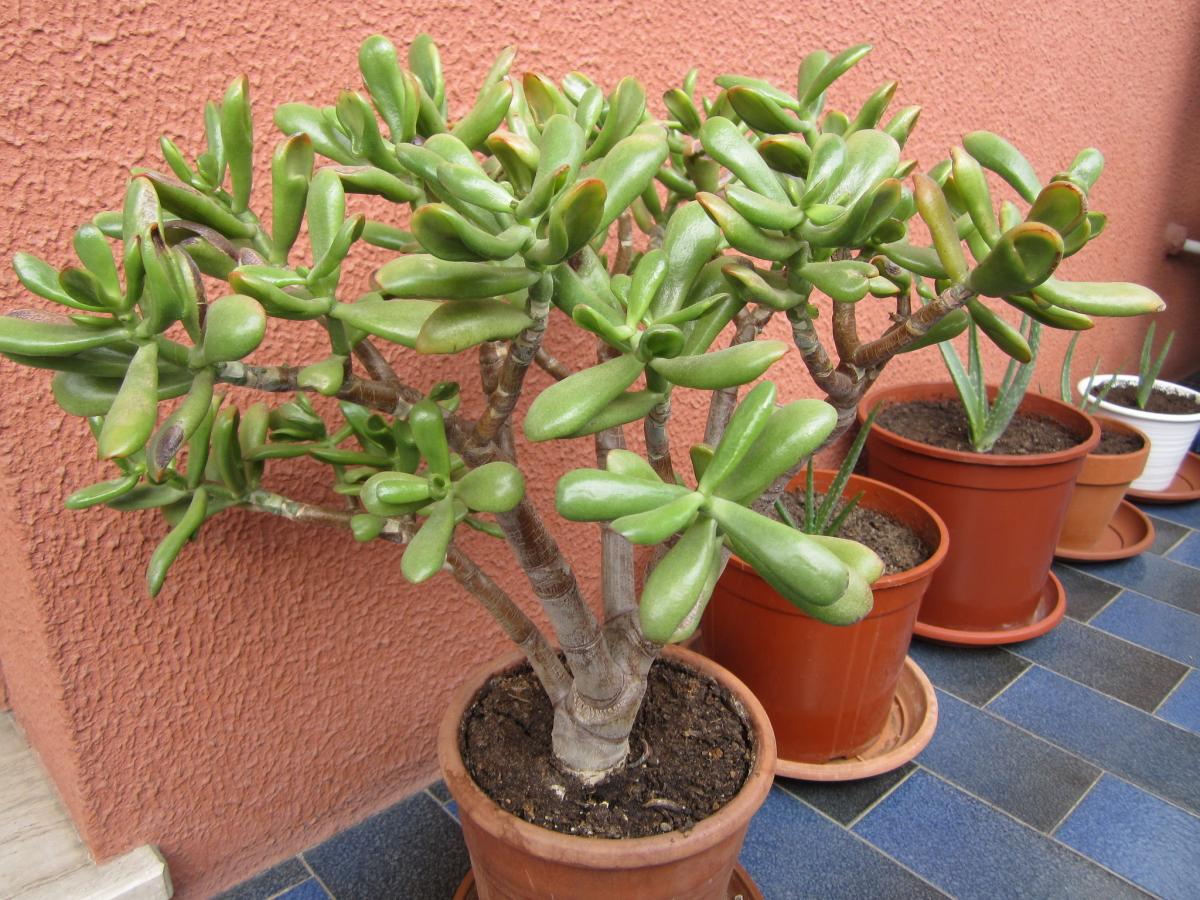
Image - Flickr / Giacomo // Crassula ovata
All the Crassula they are a genus of 620 species of succulents native to South Africa. Some are shrubby, like the Crassula arborescens, but there are others that are more herbaceous such as Crassula perfoliata. Its height, then, ranges between 10 centimeters and 3-4 meters. They have leaves with very varied shapes and colors: rounded, triangular, green, bluish, with dots, ... in short, they are very, very interesting plants.
echeveria
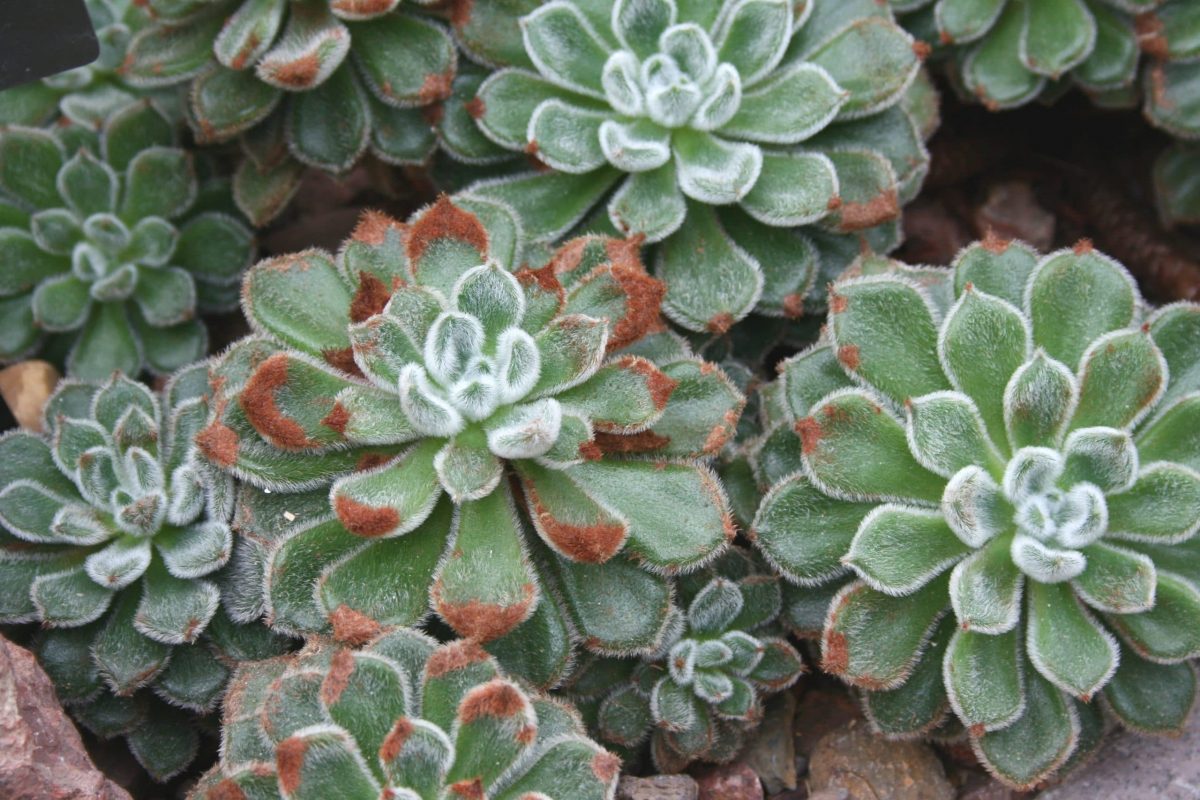
Echeveria silky
La echeveria is a genus of 393 species native to the Americas, specifically growing from the southwestern United States to northern South America. They are generally small plants, with a height of about 30 centimeters maximum, and that have stems that often branch. The flowers are fleshy, small and very brightly colored.
haworthia
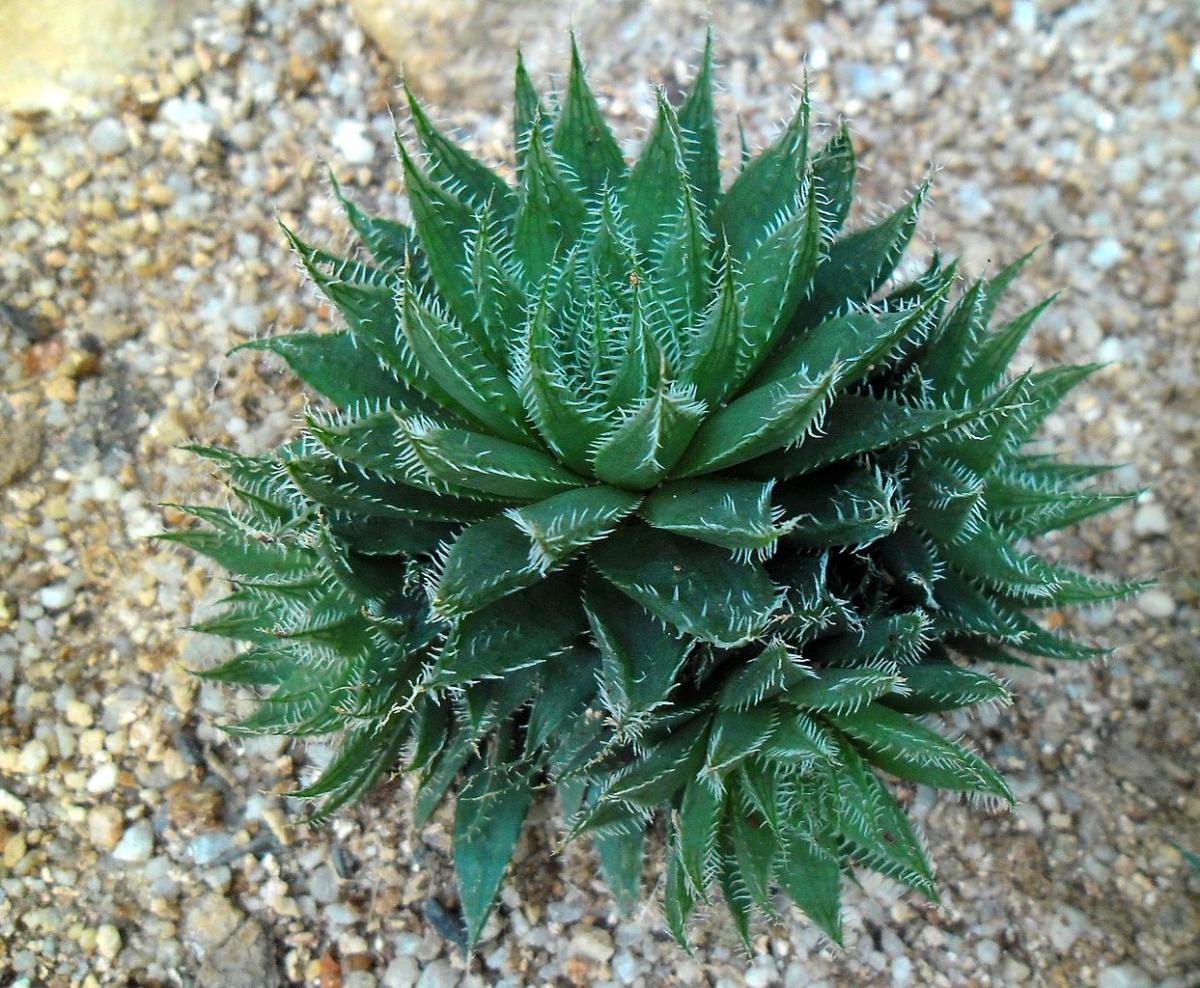
Image - Wikimedia / Earth100 // Haworthia bolusii
The gender of haworthia it is made up of some 70 species, most of them endemic to South Africa. They grow by forming rosettes of fleshy leaves, with a height of up to 10 centimeters and a width of up to 30 centimeters. Its color is green, in its different shades, and when they bloom they produce a floral stem with whitish flowers that exceeds the height of the plant.
Lithops

Image - Wikimedia / Abu Shawka
The Lithops They are a genus of 38 species of plants known as living stones or stone plants that grow in southern Africa. Like the Conophytum, they have two leaves, although they have them further apart. White or yellow flowers usually sprout from its center. Its height does not usually exceed 4 centimeters.
Pachyphytum
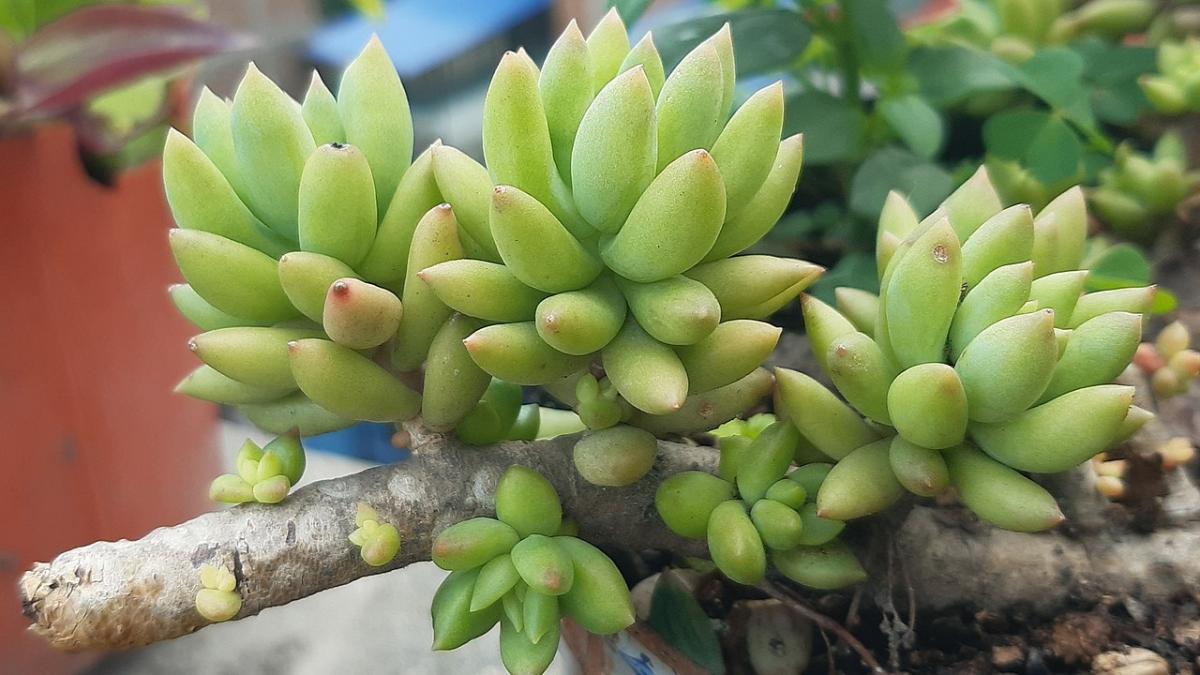
Image - Wikimedia / Sabina Bajracharya // Pachyphytum fittkaui
The Pachyphytum They are a genus made up of 17 native species, most of them from Mexico. They develop fleshy, rounded or elongated leaves, which form a rosette that sprouts from a thin and more or less tall stem. They do not usually exceed 20 centimeters in height, and they bloom producing small green to pinkish flowers.
Pleiospylos
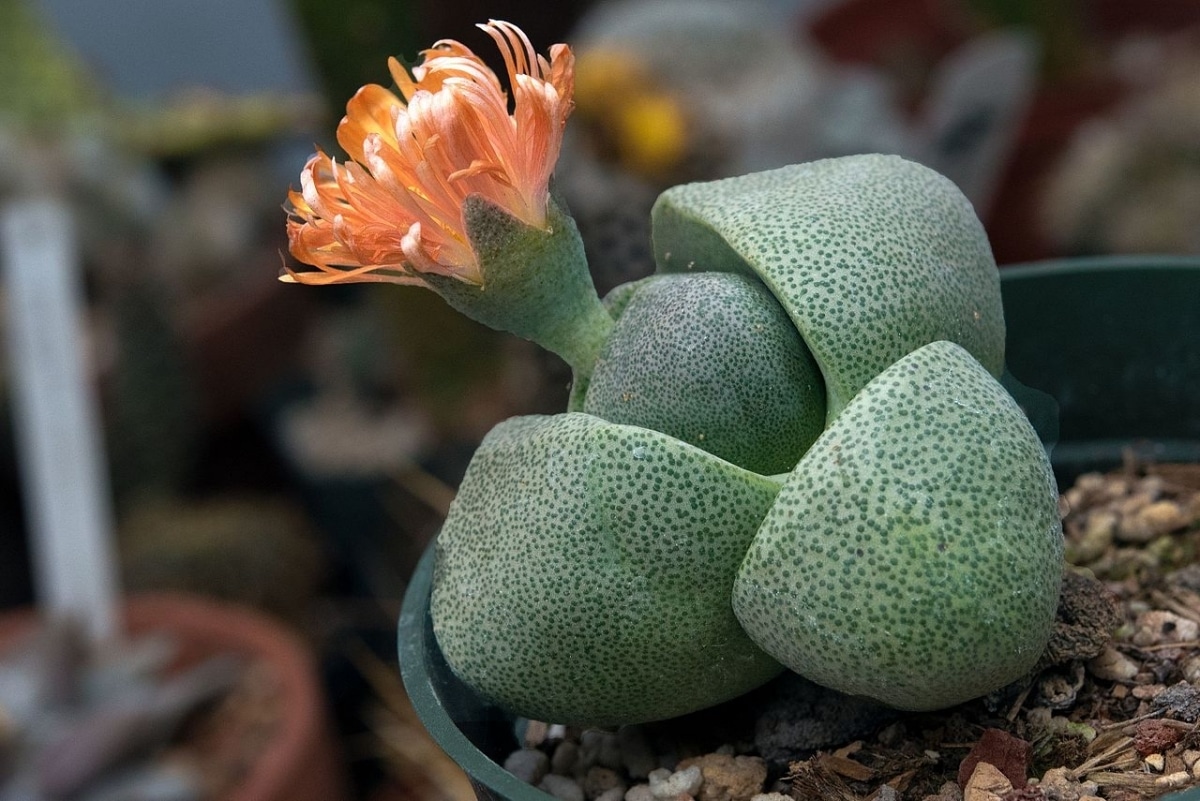
Image - Wikimedia / Alan Rockefeller
The gender of Pleiospylos it comprises between 20 and 40 species native to South Africa. They grow about 3 centimeters tall, and they have hemispherical, opposite, and very fleshy leaves of whitish green or lilac color depending on the variety. The flowers sprout from the center of the plant and are yellow or purple.
Sempervivum
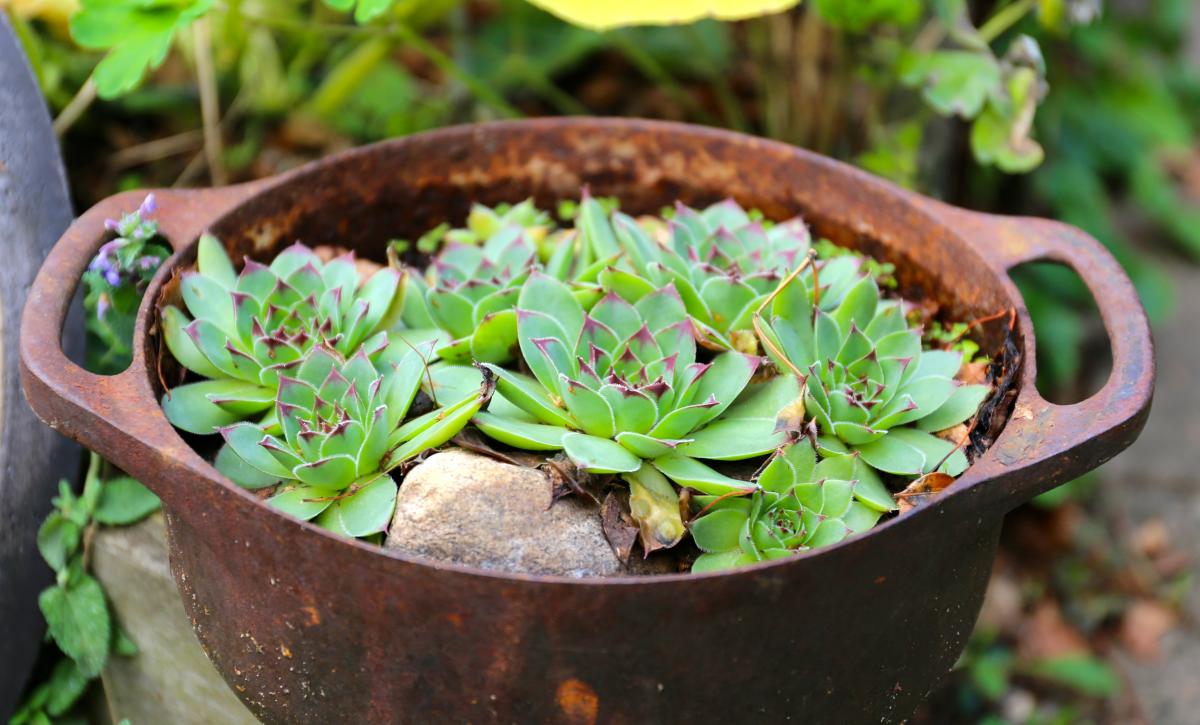
Sempervivum tectorum
The 30 species of Sempervivum that have been described are plants that we find in Spain (specifically in the Canary Islands and in the mountains of the Iberian Peninsula), as well as in Armenia, the Caucasus, Turkey, the Alps and the Balkans. They grow forming a rosette of more or less triangular leaves, with a height that rarely exceeds 3 centimeters in height. They produce numerous stolons, so they end up forming more or less large groups.
How are they cared for?
If you have questions about how to take care of these beautiful plants, follow our advice:
Location
Most of the succulent they have to be placed in a sunny exposure, but there are some, like the haworthia, that it is better to protect them from the sun during the central hours of the day.
Irrigation
Infrequent. Ideally, always check the humidity of the substrate before watering. To do this you can insert a thin wooden stick and see how much earth has adhered to it: if it has been a lot, it will not be necessary to water.
Other options are to use a digital moisture meter, or weigh the pot before watering and again afterwards.
Special case: frosty winter
If you live in an area where frosts occur in winter, irrigation in that season has to be very scarce. In fact, it should not be watered if subzero temperatures are expected as otherwise the roots could freeze.
Bearing this in mind, if frosts occur very often, it is best to water once a month.
Substrate or soil
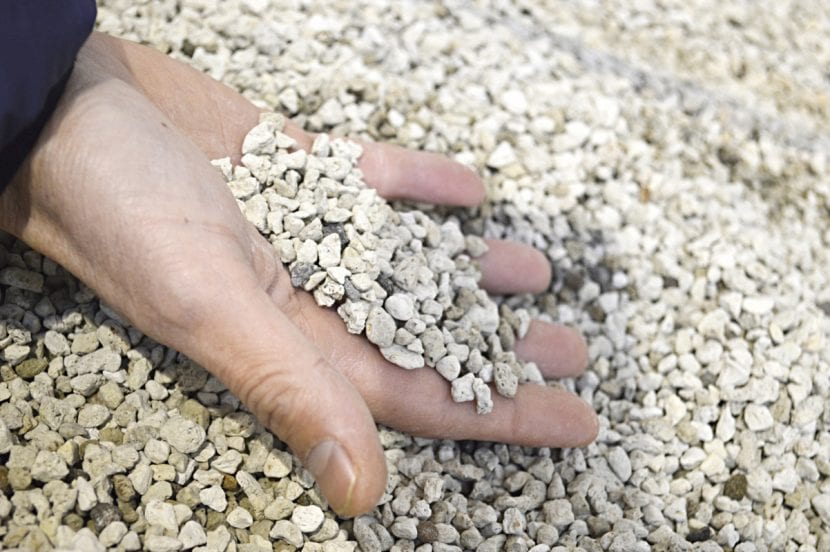
Image - Pomice per Bonsai
Must have very good sewer system. From my own experience I recommend you use cheek (on sale here), or mix it with a little - less than 30% - of universal growing medium (for sale here).
Anyway, if you have them in a pot you can also use mulch (on sale here) mixed with perlite (for sale here) at 50%.
Subscriber
During spring and summer they must be paid with mineral fertilizers. You can use a liquid fertilizer for cacti and succulents (on sale here), or you can add a small spoonful of Nitrofoska every 15 days.
Planting or transplanting time
Whether you want to plant them in the garden or change the pot, something you have to do every 2 years, the ideal time is in spring.
Multiplication
To get new copies you can sow its seeds in seedbed with vermiculite during spring or summer; or take stem cuttings and plant them in pots with sandy substrate, such as the cheek, during spring.
Pests
The pests that can affect our favorite plants are the following:
- Mites: like the red spider. They are animals that feed on the sap of the leaves, leaving them discolored spots. Fortunately, they are easily removed by cleaning the plant with mild soap and water, or with an acaricide (for sale here).
- Snails and slugs: they eat all the parts of the succulents, to the point that if we leave them we can end up losing them in less than we think. To do? Treat the plants with molluscicide or use a remedy that repels mollusks, such as the ones we tell you in this other article.
- Mealybugs: they are, by far, the most annoying pest, the one that appears every year. They also feed on the sap, especially the younger shoots. Although you can remove them with an anti-mealybug insecticide (on sale here) or with diatomaceous earth (for sale here).
- Soil worms: they are larvae of different insects that feed on the roots of plants. To avoid this, if the succulents are grown in pots, new substrates must be used; and if they are in the ground it can be helpful to plant patula tagetes close as it repels them.
- Caterpillars: the caterpillars feed on the leaves and sometimes also on the stems. To avoid it, or minimize its attacks, it is advisable to treat with Diazinon.
- Rodents: They can become addicted to certain species, such as Sedum. To avoid this, it is best to go for repellants by ultrasound.
Succulent plant diseases
Basically, they are the following:
- Parasitic fungi: roya, fusarium, rot, botrytis. We will know what it has if we see brown, reddish, whitish or grayish spots somewhere. The treatment consists of applying fungicides (for sale No products found.).
- Bacteria and Viruses: in succulents they are very rare, but they can cause colored mosaics on the leaves. Treatment consists of removing the affected parts.
Problems
The most frequent problems they have are the following:
Excess irrigation

Overwatering is quite a serious problem that can affect succulents. Therefore, if we see that they become soft and if the substrate is very wet, we have to change the land for one such as the pumice with 30% peat, and treat with fungicide. What's more, we will reduce the frequency of irrigation, watering only when the soil is completely dry.
Rot
It can be from the leaves, stems and / or roots. It occurs when we overdo irrigation, if the environmental humidity is very high, or if we grow them in a pot with a plate underneath which is always with water.
To do? Remove the affected parts, change the substrate for one that has better drainage, and water less.
Ethiolation
It happens when they don't have enough light. The leaves and stems are developed more than necessary to be able to capture more light, growing towards that more powerful source. In doing so, they become very weak, and soon they bend because they cannot support their own weight.
To do? Put the plant in a brighter place, but without direct sun, at least for the moment, since if it were, it would burn. You have to get used to it little by little. Also, if it is a Haworthia, Gasteria or Sempervivum, they must always be kept in semi-shadow.
Burns
Burns appear when a non-acclimatized plant is directly exposed to the sun, or when it is kept indoors next to a window. They occur almost overnight, so if your crass has, you have to take it to a protected place. Of course, keep in mind that these spots will not disappear; they will heal, yes, but the plant will always have a small brown spot.
Rusticity
It will depend on the species, but the vast majority support weak and occasional frosts of up to -2ºC, provided they are short-lived. Of course, they all need protection against hail.
Design with succulents not cacti
Now that you have known many succulent plants and their care, you may be interested in knowing how to decorate your home or garden with them, right? So before we start, let me give you a few tips:
- Choice of species: it is important that the adult size that each of the plants that you want to use to decorate have is taken into account, since otherwise in the medium or long term you will have to change the design.
- Take the weather into account: If you are going to have them outside, think that they are plants that do not like the cold very much, so if there are frosts in your area you will have to protect them with anti-frost fabric for example.
- That they do not lack light: they can be in what I like to call "luminous shadow", that is to say, in an area where there is a lot of light. Now, if you grow Lithops, Pleiospilos, or other plants that want sun, it is better that they are exposed to it directly (think to acclimatize them before so they do not burn).
Terrariums
Isn't it a wonderful idea to have a small garden in your house? There are many succulents that adapt very well to small spaces, such as a recycled aquarium or terrarium. Even if you control the watering a lot, making sure that the substrate dries well before watering it again, it is possible to have them in glass containers.
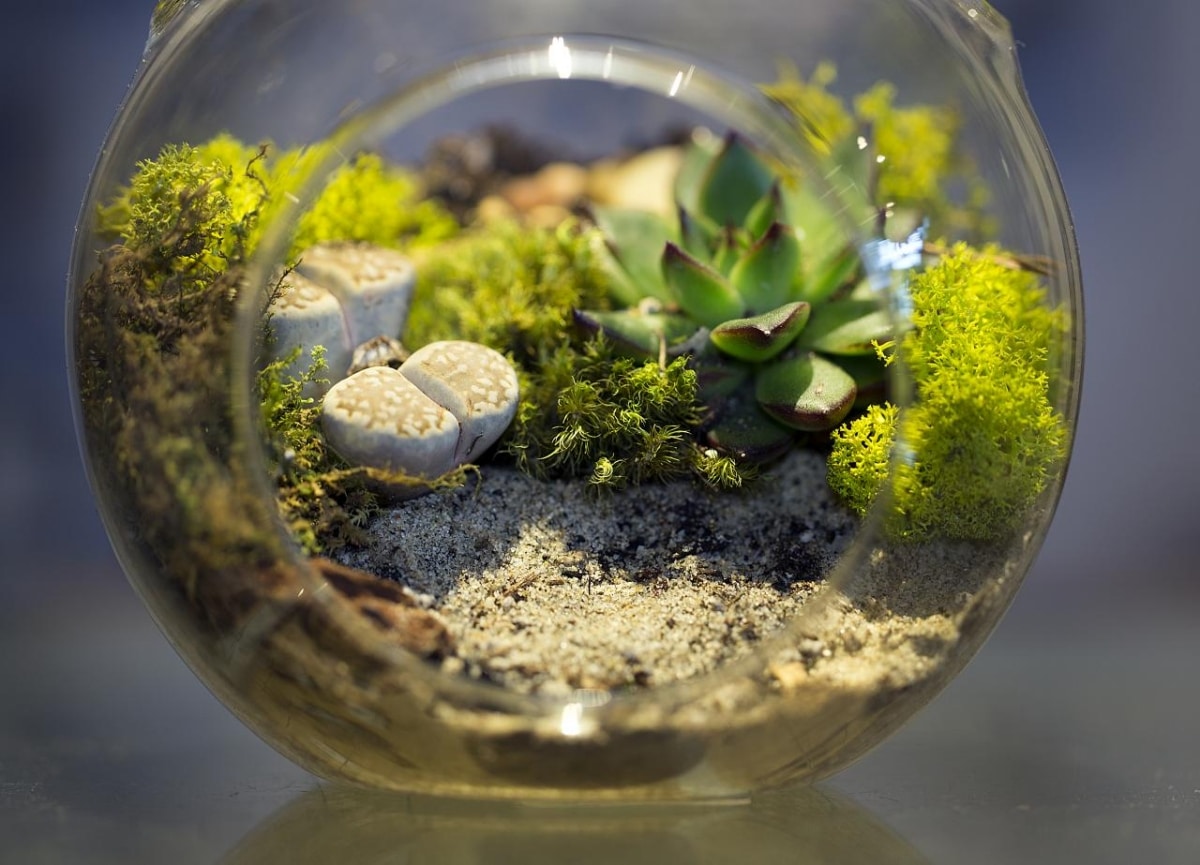
Image - Wikimedia / christopher
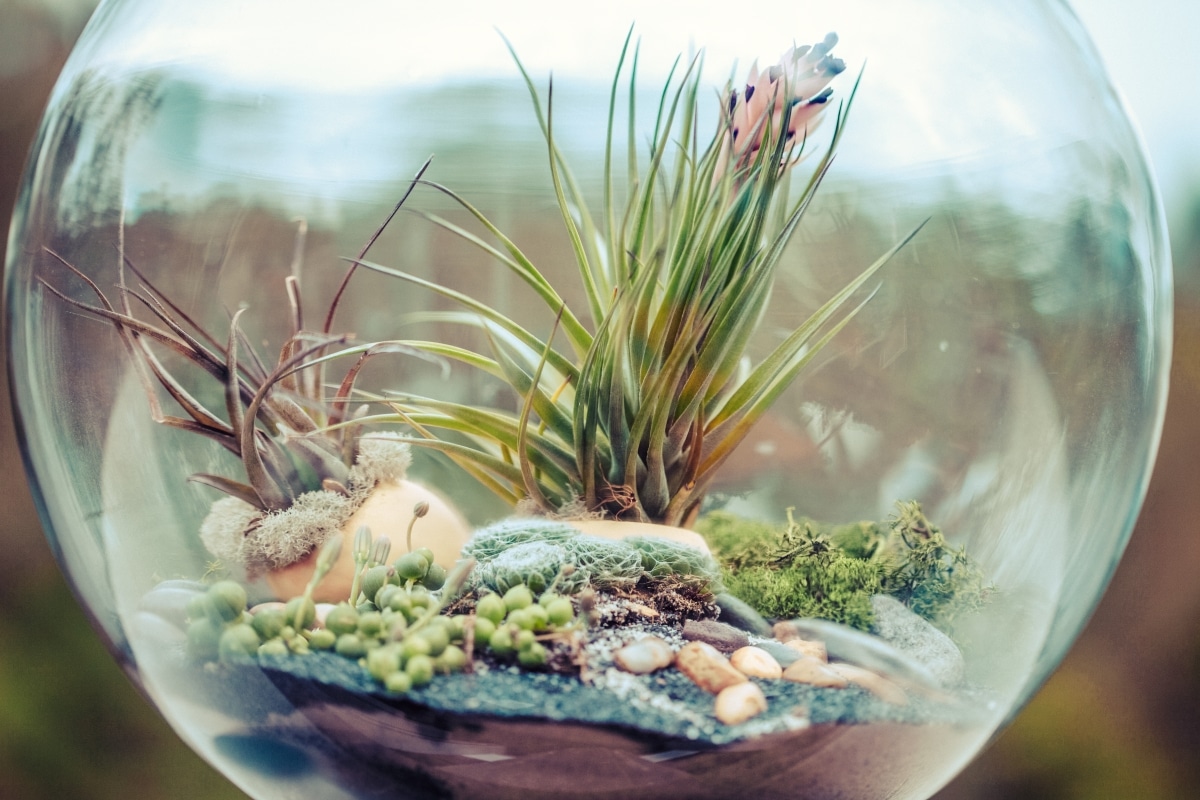
Image - Flickr / Sonny Abesamis
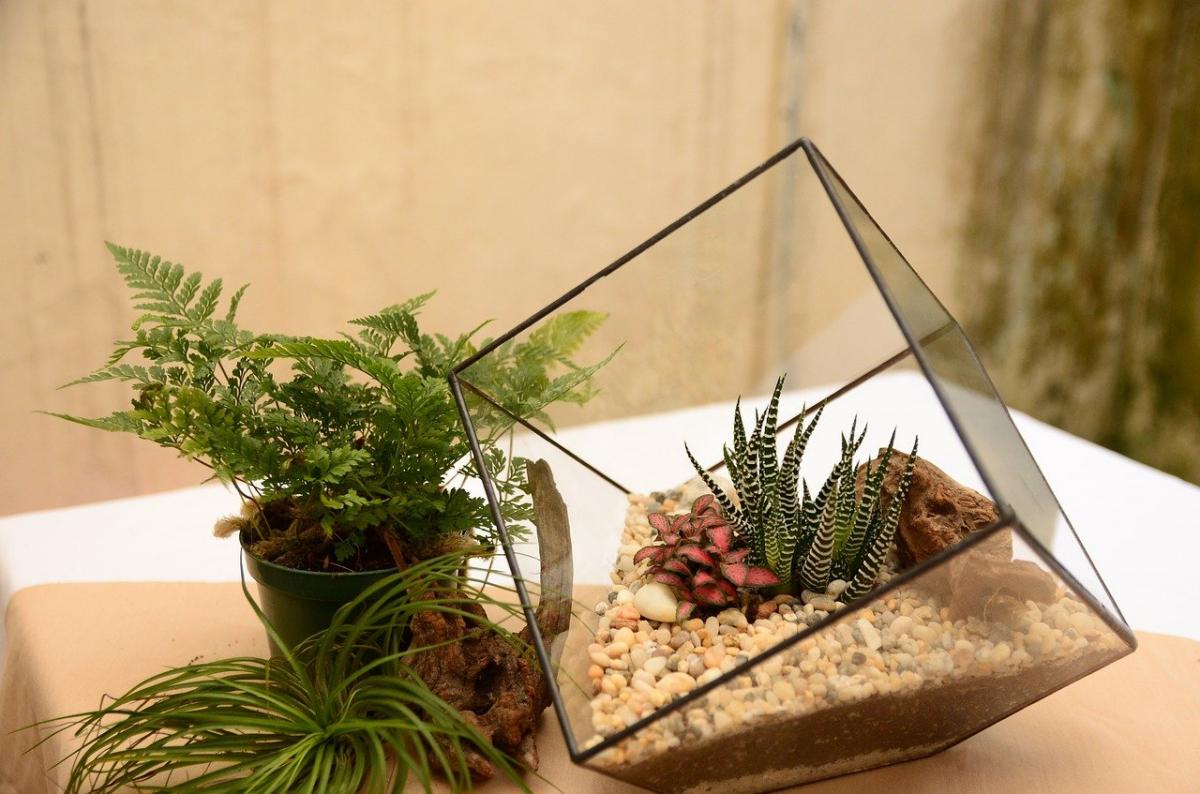
Decorate the outside
For example, in a rockery or succulent garden, the succulents are very beautiful, as long as the climate is right and the soil has very good drainage. You can also make great compositions in pots and planters. Take a look at these images:
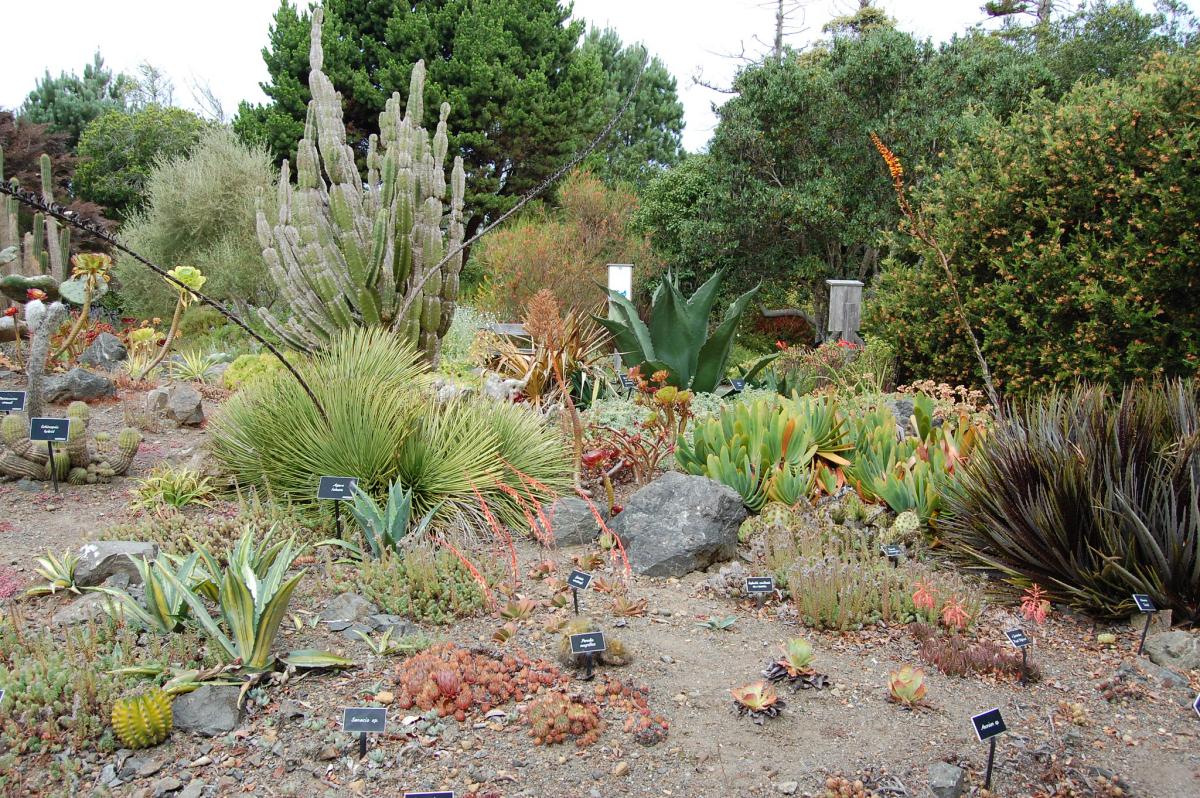
Image - Flickr / FarOutFlora
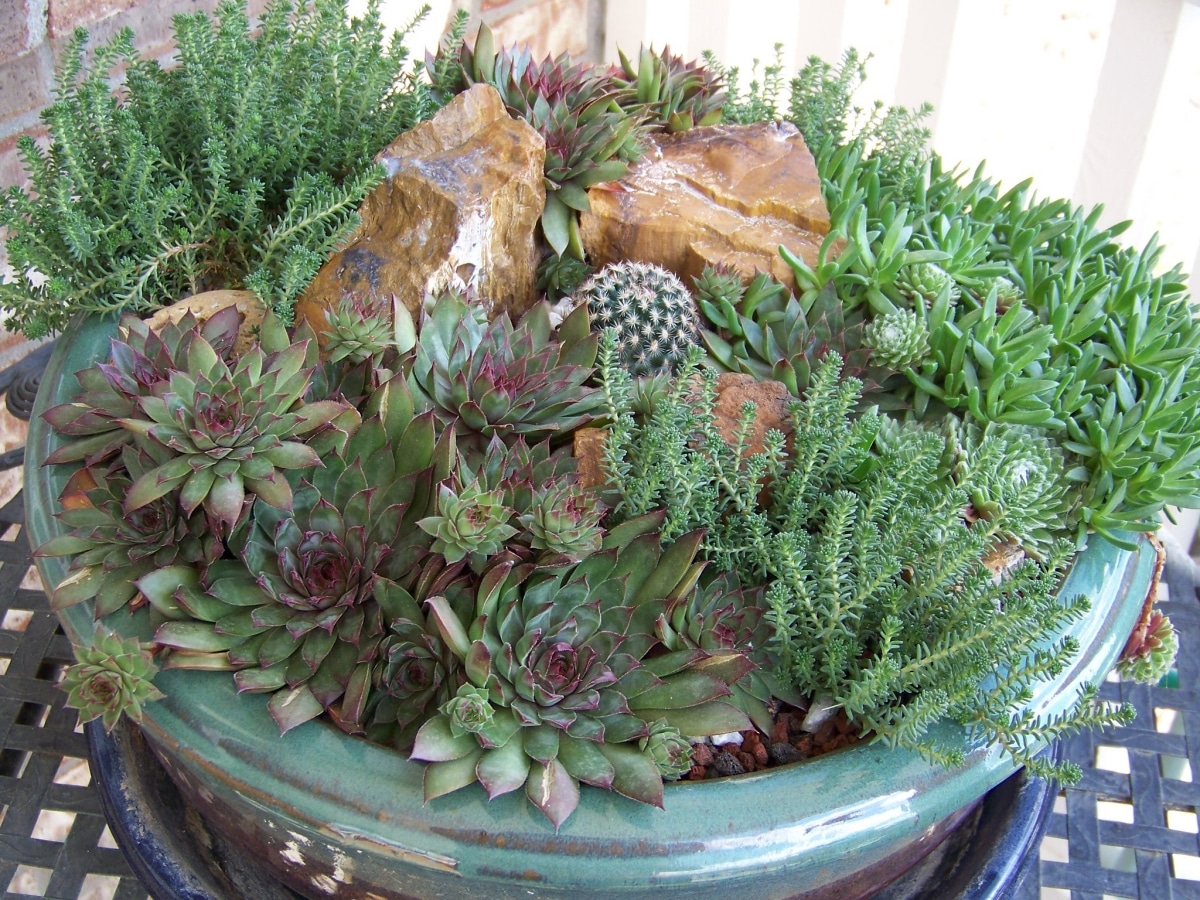
Image - Flickr / Patrick Standish
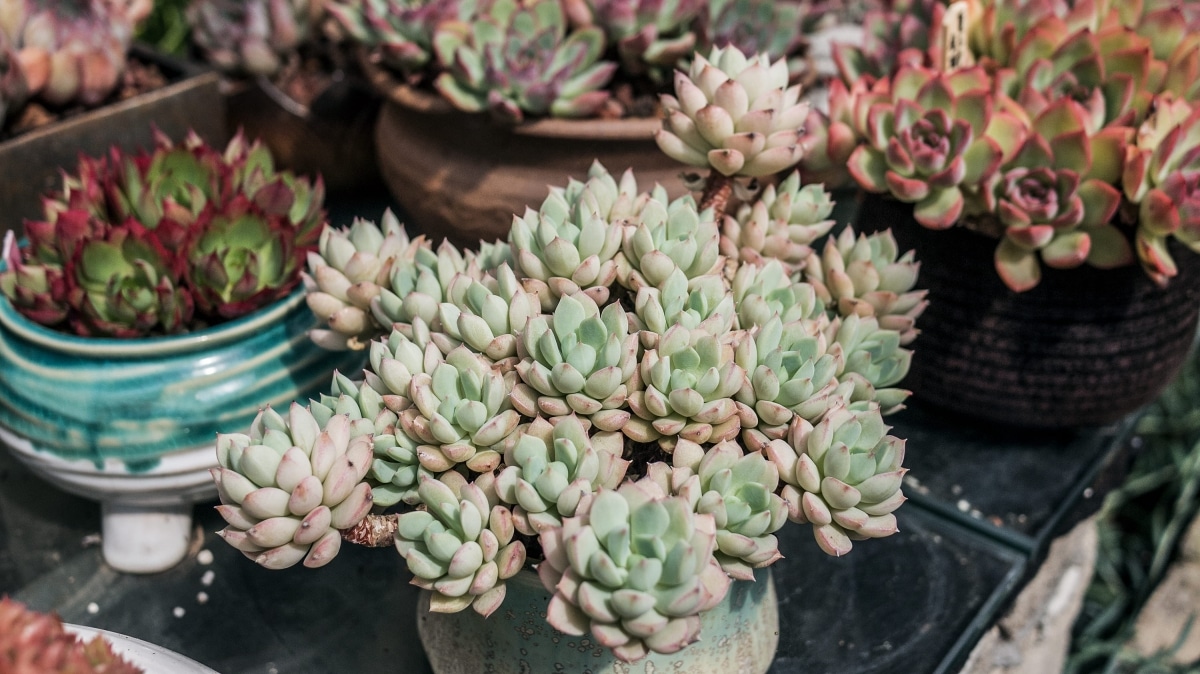
Succulent vertical gardens
They have become very popular, and the truth is that they look great almost anywhere. You can make them with wood, or buy one and simply plant the plants that are best adapted (in general, they are the small ones like Echeveria, Sempervivum, Pleiospilos, etc.).

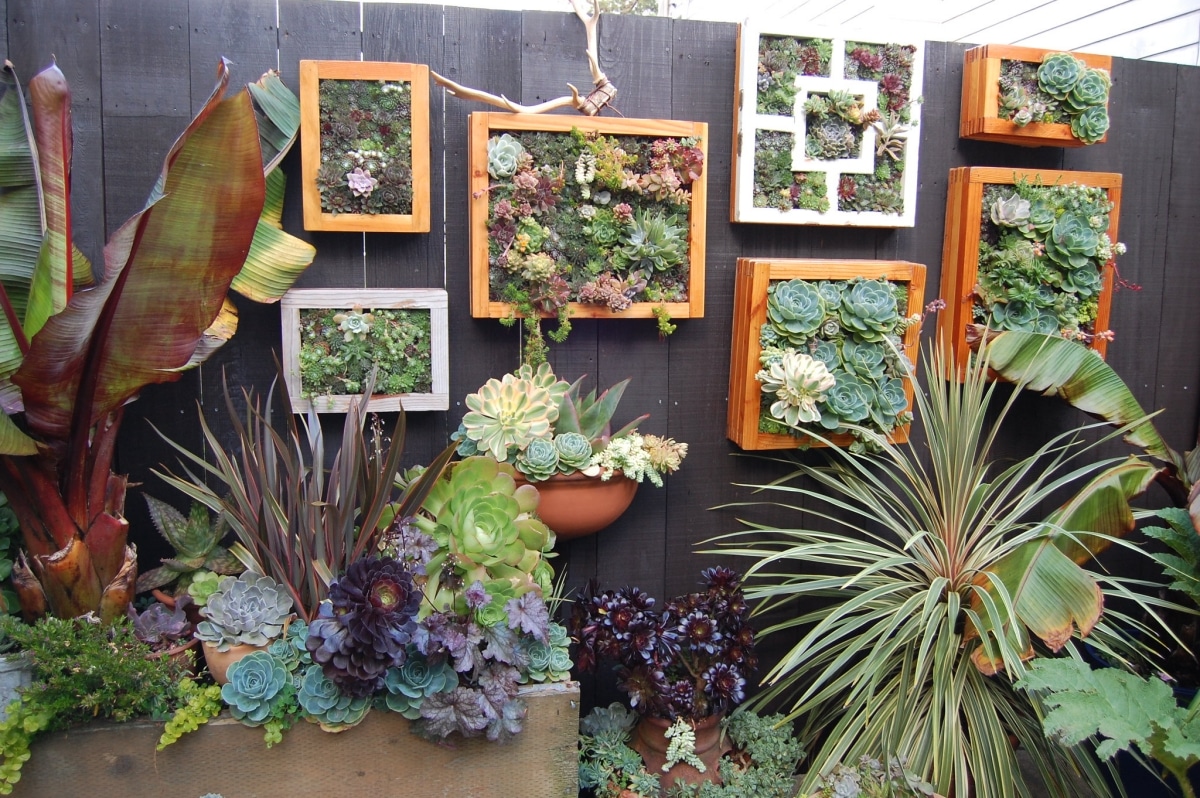
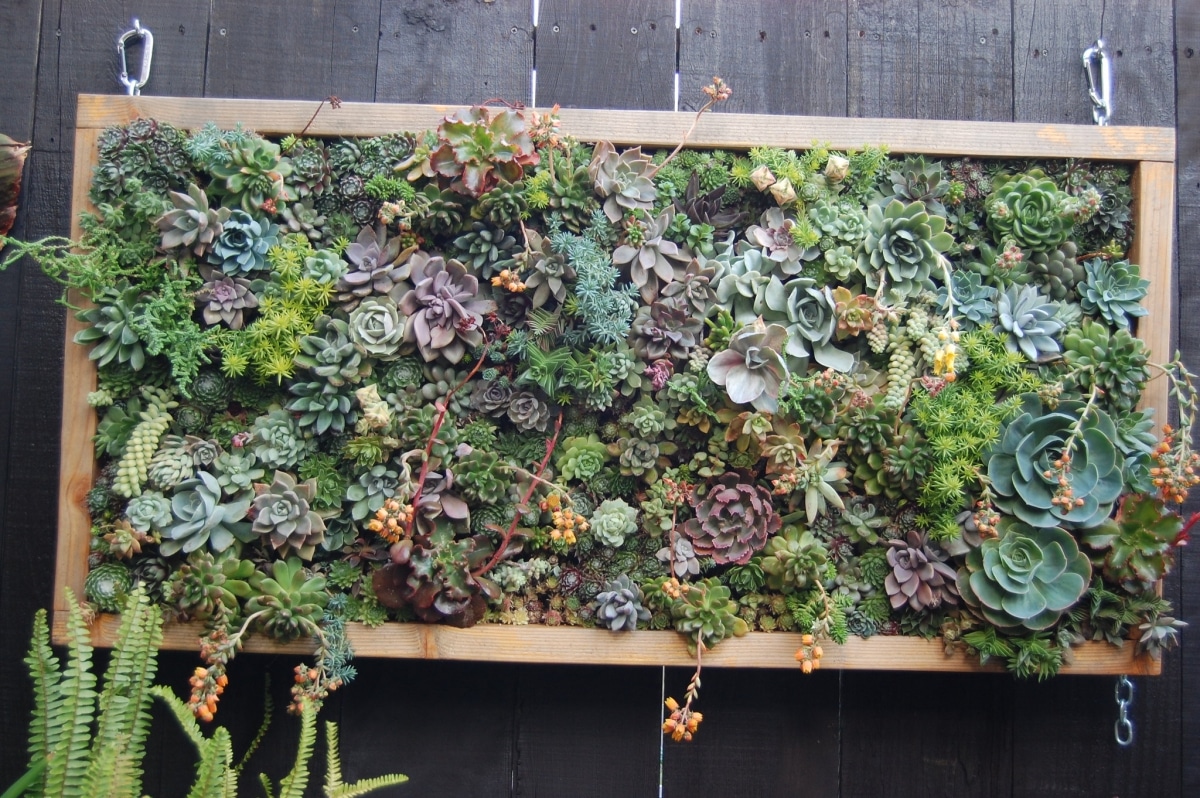
These three images come from Flickr, user FarOutFlora.
More decorating ideas
If you need more ideas, here you go. Enjoy them:
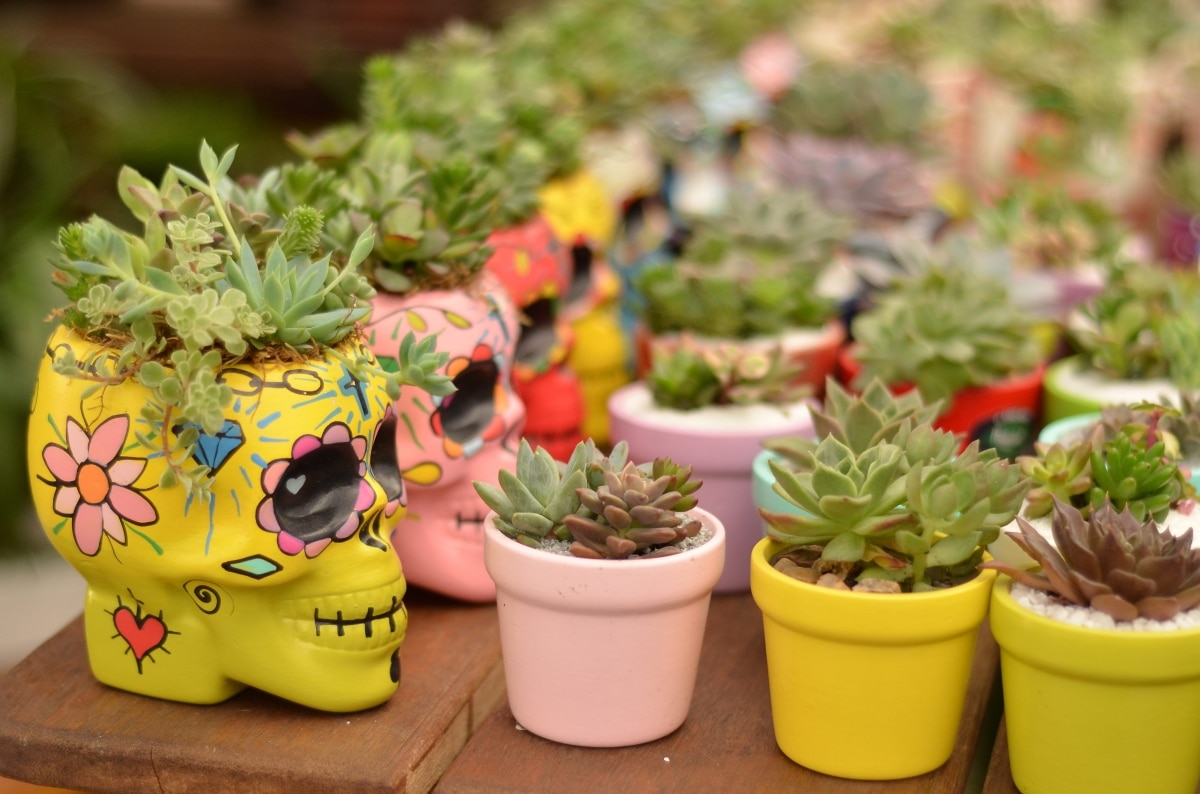
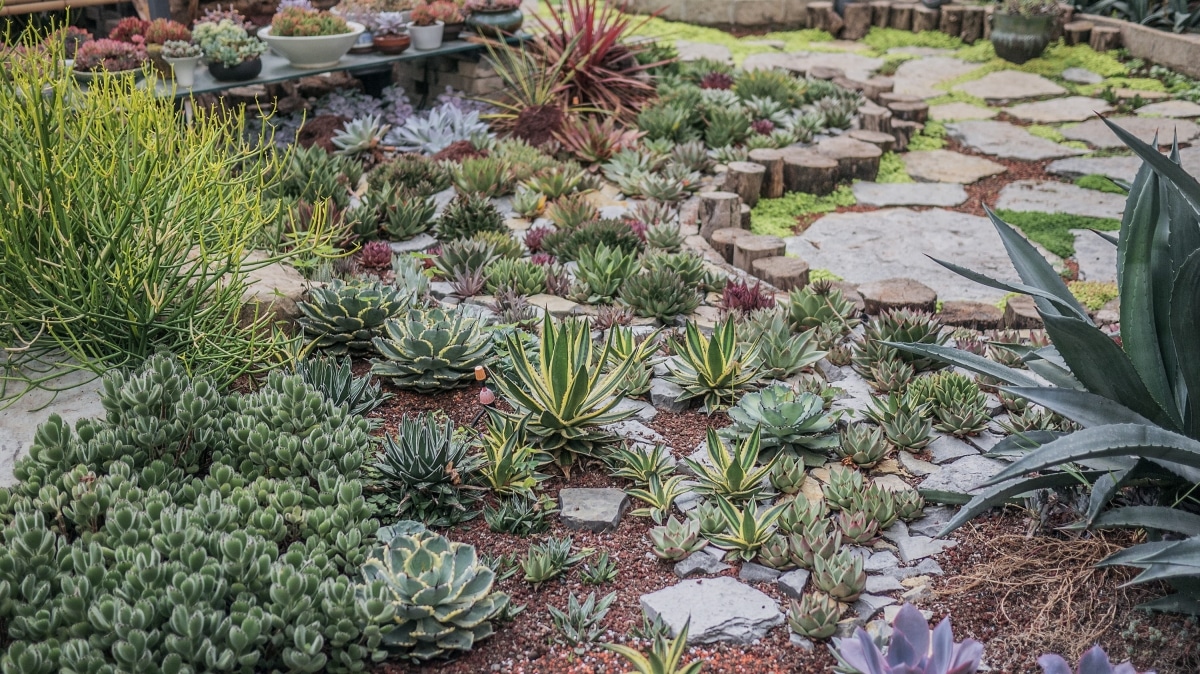

Image - Flickr / Michael Coghlan
What do you think of these plants? Do you have any?